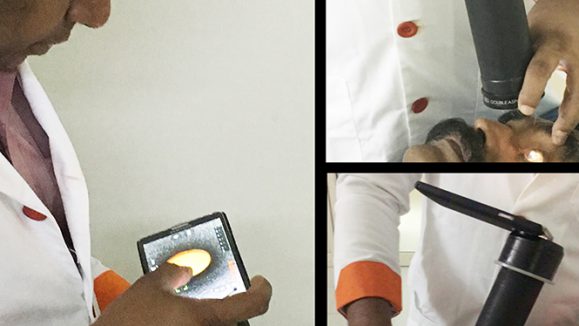It has been long established that elevated intraocular pressure (IOP) is a major risk factor in glaucoma and that reducing the IOP levels has been confirmed to slow the progression of the disease. The different ways to go about it is a different matter altogether.
It is now a key element in glaucoma treatment to individualize the setting of a target pressure where the disease is unlikely to progress. This process may be achieved either pharmacologically or surgically (lasers or incisional). Generally, it has become common practice among clinicians to go the surgical route only when medications fail.
The traditional trabeculectomy, already known to be associated with various possible complications, including infection, inflammation, bleb leak, bleb encapsulation, hypotony, cataract, and even vision loss in the worst outcomes, have made most ophthalmologists reluctant in using the procedure as an early intervention in glaucoma.
On the other hand, other procedures such as glaucoma drainage devices and non-penetrating filtration surgery (NPFS), while associated with lower rates of complications but conflicting efficacy results, have yet to gain major popularity among surgeons. Such procedures necessitate high skills and long learning curves that might have discouraged glaucoma surgeons. Since the ideal surgical solution in glaucoma is yet to be found, experts continue to look for novel techniques that would address the issues related to available glaucoma treatments while aiming for a higher safety profile, rapid recovery, and higher efficacy.
In 2007, Assia et al first suggested CO2 Laser-Assisted Sclerectomy Surgery (CLASS) as a means of simplifying filtration surgery. CLASS comes with advantages such as: utilizing the properties of the CO2 laser to ablate the area of Schlemm’s canal, and thinning the scleral wall without penetrating the anterior chamber. The procedure facilitates the effective absorption of laser energy by any water or aqueous solution present (even at minimal amount), thereby reducing the IOP in a highly controlled manner. CLASS can be performed as a stand-alone procedure or in combination with cataract surgery.
CLASS has demonstrated efficacy in achieving fluid percolation with significant IOP reduction and a low perforation rate in preliminary studies using animals and human cadaver eyes. Its first model of the CO2 laser system (OT-133) showed the same efficacy in pilot clinical studies.
The second generation device for the CLASS procedure (OT-134, “IOPtiMate”; IOPtima Ltd, Tel Aviv, Israel) utilized in conjunction with a micromanipulating system, also demonstrated safety and efficacy when tested in experimental models. These studies have suggested that the novel CLASS technique is a relatively simple and effective operation requiring a short learning curve.
Furthermore, following preclinical trials using the OT-134, the safety and efficacy of the CLASS technique in lowering IOP were tested in clinical trials in primary open-angle glaucoma (POAG) and in pseudoexfoliative glaucoma (PXFG). Based on preliminary results of the first 37 patients in 3 sites, Assia et al reported that the procedure is safe and efficient in lowering IOP. Recently, additional patients and the mid-term results of the CLASS procedure as studied in 9 sites around the world have been reported and published by Assia and colleagues.
“Using IOPtiMate for the CLASS procedure, we found that the eye was normally quiet, and vision was maintained soon after surgery. The procedure is easy for surgeons to learn,” shared Ehud Assia, M.D., IOPtiMate study’s prime site, Meir Medical Center, Kfar Saba, Israel.
“The fluid percolation is titrated during surgery; we continue laser applications until we achieve a satisfactory clinical result,” he added.
The multi-center study was conducted in 9 medical centers on four continents, including centers in Mexico City; Madanapalle, India; Moscow; Ancona, Italy; Valencia, Spain; Geneva; Lausanne, Switzerland; Tel Aviv and Kfar Saba, Israel.
The study evaluated 111 consecutive eyes of 111 participants and demonstrated a decrease in IOP from baseline at 1, 2 and 3 years of 45.1%, 46.8% and 42.5% (P< 0.001), respectively. The investigators also reported that patients used significantly fewer medications after surgery.
“This multinational study of 111 eyes found CLASS to be relatively safe and effective procedure for the treatment of OAG. No device malfunctions occurred,” the investigators reported.
While recent results are quite promising, the investigators emphasized that this 3-year study comes with limitations too. Therefore, a prospective, masked, long-term randomized controlled clinical trials comparing the CLASS procedure to other currently used procedures will be helpful to further evaluate and substantiate the safety and efficacy of the procedure.
Reference:Geffen N, Mimouni M, Sherwood M, Assia EI. Mid-term Clinical Results of CO2 Laser-assisted Sclerectomy Surgery (CLASS) for Open-Angle Glaucoma Treatment. J Glaucoma. 2016;25(12):946-951.




